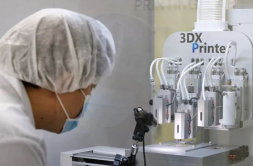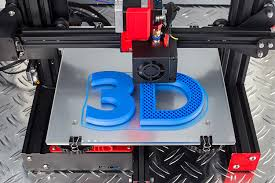The world's first 3D-printed organ, made in part from someone else's stem cells, has been successfully transplanted into a patient in South Korea. In 2023, a team of scientists, doctors, and engineers performed the first 3D-printed trachea transplant at Seoul St. Mary's Hospital on a woman in her 50s who lost part of her trachea after surgery to remove thyroid cancer.

The patient's new organ is made of cartilage and mucosal lining (the moist lining of the lungs and nose). The scientists used nasal stem cells and cartilage cells from other patients to make the organ, which was used during surgery to treat nasal congestion and septum. Discarded cells. The 3D printed trachea also contains polycaprolactone (PCL) for structural support as well as bioink. The PCL is only expected to last five years, and scientists hope the artificial organ will help the patient's body regenerate its windpipe before biodegrading.
According to the hospital, existing treatments after tracheal resection in the past were unable to restore the original organ and were complex and dangerous. Now, using additive manufacturing technology could revolutionize the treatment of patients with thyroid cancer, congenital anomalies, or tracheal trauma. One of the breakthroughs of the surgery was that the patient did not need any immune suppressants and six months after the surgery, the trachea was not only healing well, but new blood vessels were starting to form. The research is currently undergoing peer review and will be published in a scientific journal in the future.

To match the size and dimensions of the trachea to the patient's specific condition, the team first collected CT and MRI data from the patient so that a perfectly fitting trachea could be designed. In this case, the length of the trachea must be less than 5 cm (2 inches). It took the researchers less than two weeks to print it and transplant it into the patient in a half-day surgery.

The project, the result of a collaboration between Korea Catholic University, Gachon University and the biomedical engineering company that built the printer, brings together 20 years of research, with the earliest laboratory studies dating back to 2004. During this time, the lead researchers collected laboratory data, including tests on animals such as beagles. This supporting data is said to be necessary for regulatory approval. High-precision technology specifically designed to print hollow tubular structures enables scientists to create such personalized organs. This custom printer was designed specifically for Seoul St. Mary's Hospital and is currently not available for use outside the hospital, but its production will be expanded in the future.
Dr. Paulo Marinho, Director of Scientific Strategy, said: "While it is too early to say that 3D bioprinting can solve the current shortage of transplant organs, it certainly raises the prospect of partially solving the problem for some organs or for some specific indications, or At least it fills the gap between traditional medicine. We published a research article in "Nature Communications" in 2019, printing a stem cell-derived heart patch to help the infarcted heart of mice, which is what additive manufacturing technology can do examples of treatments for illnesses."
Kmpass is a high-tech enterprise committed to the research and development, production, processing, sales and technical services of 3D printing materials. The company develops a variety of powder materials and chemicals. Provide OEM service. If you need high quality 3D printing powder, please feel free to contact us.
hot tags: 3d printing,3d printing technology, 3d printer



